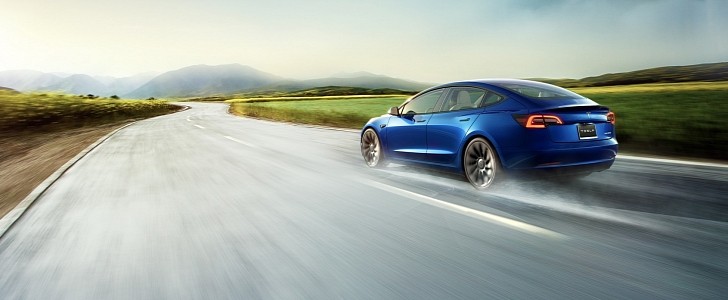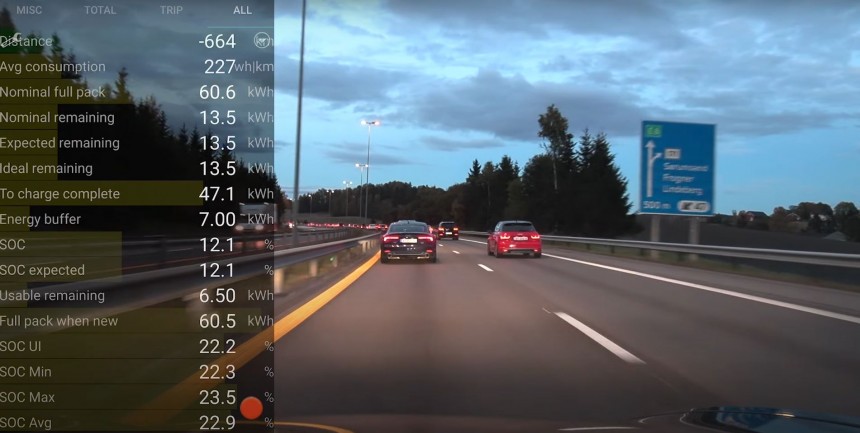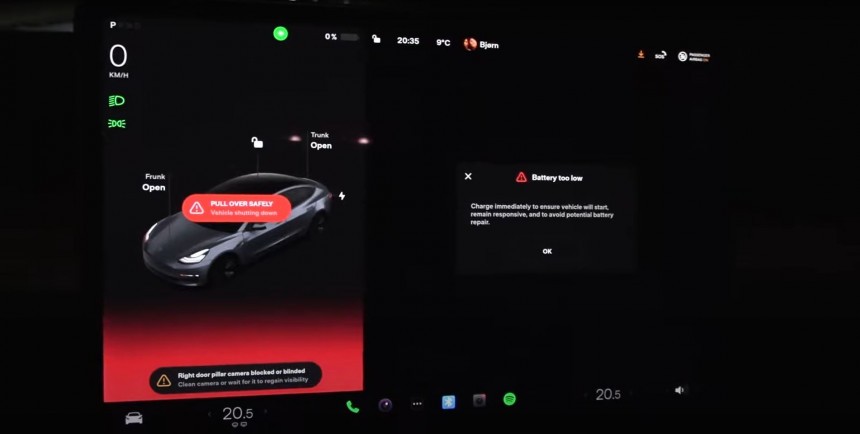Tesla’s cobalt- and nickel-free lithium-iron-phosphate (LFP) battery is a great step ahead in the production of cheaper EVs. These devices store energy for longer, are lighter, come with safer chemistry, and have shown a more efficient charge and discharge cycle. Most notably, due to the absence of some metals, the batteries are also less toxic. But let’s see them put to the test.
Here’s how a 2022 Tesla Model 3 with LFP batteries fared in the real world after the range estimator dropped to zero miles.
The fact that Tesla is using LFP batteries in some of its vehicles isn’t something new. However, the automaker chose to install these energy storage units starting with the cheapest vehicles it makes. Hence, the Model 3 Standard Range Plus (now known simply as the Model 3 Rear-Wheel Drive) was one of the first cars to come out of the factory with LFP batteries. They are cheaper to make, are considered safer, and promise prolonged usability.
However, the main disadvantage of the LFP batteries is that their energy density is not as good as the Li-ion’s. But a small drop in range could be acceptable when you factor in all the advantages.
But are they any good after the zero percent state of charge is reached while driving? Let's find out.
The journey begins with just 6.3 kWh of energy left in the battery pack. The scanning tool showed there was a generous energy buffer of 7 kWh available after the car’s computer would have eventually displayed 0 percent. This meant the total energy available was, in fact, 13.3 kWh. So, the Tesla Model 3 could have gone approximately double the distance that was shown as possible when there were 6.3 kWh left in the battery, even though it is not recommended to drop below 0% state of charge and continue driving.
Nonetheless, Bjorn Nyland kept pushing on until the Model 3 started displaying visual and audio warnings that the range was too low. The vehicle shifted into neutral and cut off the acceleration completely, which forced the driver to stop. After pulling over into a bus stop, the Tesla showed a warning on the central screen that it was going to shut down and advised the driver to “charge immediately” or risk “potential battery repair.”
The impressive thing is that he managed to drive 56 km (35 mi) after the vehicle displayed 0% remaining in the battery in 48-degree Fahrenheit (nine-degree Celsius) weather. It could be enough to get you to a place where there's a plug available.
The American manufacturer recommends charging the LFP battery at least once per week to 100% and even setting the charging limit to the maximum. That’s important because it helps the battery management system (BMS) calibrate the energy storage unit to perform as best and as safely as it can.
The EV maker also cautions owners to not leave the Model 3 with LFP batteries unplugged for long periods because it could lead to “permanent battery damage.”
Since the Tesla used in this test is a newer model, the energy reserve threshold may have been set higher automatically. This allows the BMS to figure out how much energy is needed for those occasions when the owner doesn’t charge the car before it reaches the 0% state of charge. Thus, results may vary. If you try to replicate the YouTuber’s test, then your car's battery might behave differently.
Lastly, internal combustion engine (ICE) vehicle owners rarely drive with little fuel left, so EV buyers should do the same and charge before the “tank” is empty.
The fact that Tesla is using LFP batteries in some of its vehicles isn’t something new. However, the automaker chose to install these energy storage units starting with the cheapest vehicles it makes. Hence, the Model 3 Standard Range Plus (now known simply as the Model 3 Rear-Wheel Drive) was one of the first cars to come out of the factory with LFP batteries. They are cheaper to make, are considered safer, and promise prolonged usability.
However, the main disadvantage of the LFP batteries is that their energy density is not as good as the Li-ion’s. But a small drop in range could be acceptable when you factor in all the advantages.
But are they any good after the zero percent state of charge is reached while driving? Let's find out.
Verifying their mightiness
To put all these positive claims to the test and other worries to rest, a YouTuber borrowed an almost brand-new 2022 Model 3 with LFP batteries. He decided to find out how far the Tesla can be driven after the car’s computer displayed zero percent remaining. The EV has a 60.6-kWh battery pack meaning that’s the entire energy available for a 100% to 0% drive.Nonetheless, Bjorn Nyland kept pushing on until the Model 3 started displaying visual and audio warnings that the range was too low. The vehicle shifted into neutral and cut off the acceleration completely, which forced the driver to stop. After pulling over into a bus stop, the Tesla showed a warning on the central screen that it was going to shut down and advised the driver to “charge immediately” or risk “potential battery repair.”
The impressive thing is that he managed to drive 56 km (35 mi) after the vehicle displayed 0% remaining in the battery in 48-degree Fahrenheit (nine-degree Celsius) weather. It could be enough to get you to a place where there's a plug available.
Don't try this at home
But this is not something that you should try with your electric vehicle. Nyland came prepared and had a portable charger in the trunk that was capable to replenish the high-voltage energy storage unit.The EV maker also cautions owners to not leave the Model 3 with LFP batteries unplugged for long periods because it could lead to “permanent battery damage.”
Since the Tesla used in this test is a newer model, the energy reserve threshold may have been set higher automatically. This allows the BMS to figure out how much energy is needed for those occasions when the owner doesn’t charge the car before it reaches the 0% state of charge. Thus, results may vary. If you try to replicate the YouTuber’s test, then your car's battery might behave differently.
Lastly, internal combustion engine (ICE) vehicle owners rarely drive with little fuel left, so EV buyers should do the same and charge before the “tank” is empty.












